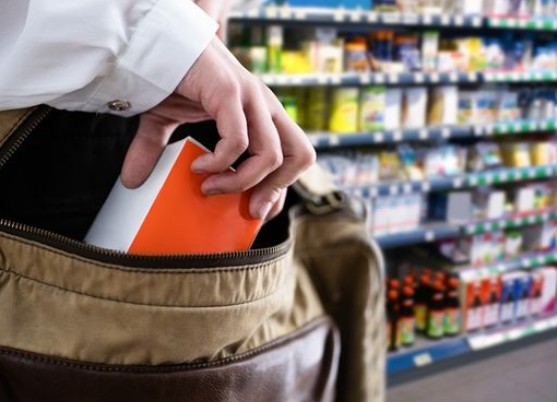The UK’s Shoplifting Epidemic: Failures of the Labour Party

Shoplifting in UK hits all-time high
Sound economics is backed by law and order. Strong businesses thrive in stable environments where property rights are protected, and criminals face real consequences. But right now, the UK’s shoplifting crisis is a textbook example of how left-wing policies erode economic foundations, inflate costs for everyone, and reward bad behavior. We’re talking about a rampant epidemic that’s draining billions from retailers, pushing up prices for hardworking families, and signaling a broader breakdown in society. And let’s be clear: under Keir Starmer’s Labour government, things have only gotten worse. They’ve talked a big game on cracking down, but their actions—or lack thereof—reveal a soft-on-crime approach that’s emboldening thieves and hammering the economy.
The Grim Numbers: A Surge That’s Costly
Uk’s Shoplifting Epidemic: 800 Unsolved Cases Daily
Let’s start with the cold, hard facts. Shoplifting offences in England and Wales hit a staggering 530,643 in the year ending March 2025—a 20% jump from the previous year and the highest since records began in 2003. That’s nearly three thefts every minute during trading hours, doubling since the 2020. Worse still, over 80% of these cases—289,464 to be precise—were closed without identifying a suspect, equating to about 793 unsolved thefts per day, up 18% year-on-year. Around 800 of these incidents go unsolved every day.
From a financial standpoint, this isn’t just petty crime; it’s organized looting that’s costing retailers £1.8 billion annually in losses alone, according to industry estimates. Add in security upgrades—tags, cameras, guards—and those costs get passed straight to consumers, adding an estimated £147 to the average household’s yearly shopping bill. It’s a hidden tax on the law-abiding, fuelling retail inflation and squeezing margins for small businesses already battered by high energy costs and taxes. And here’s the kicker: this surge has accelerated under Labour’s watch. Crime overall is up 7% since they took power in July 2024, with shoplifting leading the charge. Shadow Policing Minister Matt Vickers nailed it: “Shoplifting has surged by 20 per cent under Labour, with more than half a million offences in the last year alone.” As someone who values fiscal responsibility, this as a direct result of misguided priorities—pouring taxpayer money into everything but effective policing.
Root Causes: Economic Mismanagement and Soft Policies
Sure, the cost-of-living crisis plays a role—rising prices for essentials like food and energy have pushed some to desperation. But let’s not kid ourselves: this isn’t just about poverty; it’s about impunity. Police have deprioritized low-value thefts (under £200) since 2014, a policy that’s persisted and worsened under Labour, leading to brazen gangs filling trolleys and walking out unchallenged. Organized crime is a big driver too, with reports linking a chunk of thefts to networks reselling stolen goods. And while it’s politically incorrect to say, frontline security in places like London’s West End claims 70% of shoplifters are asylum seekers—stealing by day and retreating to taxpayer-funded hotels by night. This ties into broader immigration failures, where lax borders allow in those who exploit the system, adding to the chaos without contributing economically.
But it’s not just the asylum seekers. Violence is escalating too: retail workers face daily threats, with weapons involved in a rising number of incidents. This isn’t sustainable — businesses are locking up basics like chocolate and baby formula, which disrupts operations and deters customers. The economic ripple? Slower high street recovery, job losses, and reduced investment in UK retail.
Labour’s Role: Promises Unkept, Blame Shifted, and Soft Justice
Labour came in promising to “take back our streets” by scrapping the £200 threshold, creating a standalone offence for assaults on shop workers, and recruiting 13,000 more neighbourhood police.
Sounds good on paper, right? But over a year in, where’s the action? Instead of bolstering cops, they’ve advised shopkeepers to hide “high-value” items from entrances—like blaming the victim for the crime. Policing Minister Dame Diana Johnson was “shocked” by brazen thefts during a visit to Hull, yet the government’s response has been tepid at best. Worse, Labour’s pushing “soft justice” reforms: abolishing short-term sentences for many offenders, which critics warn will unleash a crime wave—including more shoplifting and burglaries. They’ve even floated using tax hikes on farmers to fund anti-shoplifting measures, treating the public like fools by linking inheritance tax grabs to crime fighting.
Starmer’s soft touch—echoed by Sadiq Khan’s bizarre claim that London’s theft surge is just because “we have a lot of shops”—shows a disconnect from reality. Meanwhile, early prisoner releases and deprioritizing thefts mean catch-and-release is the norm, with police numbers down 1,300 on the streets. This isn’t leadership; it’s ideological indulgence. Labour’s blamed middle-class thieves, the Tories, even shop layouts—anything but their own failures. As a result, we’ve got record unsolved rates (e.g., 76.9% in the Met), and the epidemic rages on.
The Economic Toll of the UK Shoplifting Epidemic
Financially, this is a disaster. Retail crime is inflating prices, closing stores, and deterring investment—exacerbating Labour’s GDP slowdown (halved to ~1% in their first year) and rising unemployment (up to 4.4%). Taxpayers foot the bill for ineffective policing while businesses suffer. The solution is straightforward: tougher sentences that actually deter because prison works, real border control to stop exploitation by migrants, and prioritizing police resources on high streets—not virtue-signaling abroad. Labour’s dithering is destroying Britain’s economic fabric. We need a return to these principles: fiscal prudence, strong law enforcement, and policies that put British workers and businesses first.
The Rise of Shoplifting in the US: Blue State Failures and Trump’s Crackdown
But it’s not just the UK where this is happening. You see, when crime runs rampant, businesses suffer, investments dry up, and everyday Americans pay the price through higher costs and lost jobs. Right now, the surge in shoplifting across the US—particularly in Democrat-run blue states—is a glaring example of how leftist policies have turned cities into free-for-all zones for criminals. We’re talking billions in losses, store closures, and a hidden tax on families that’s fuelling inflation. And let’s be straight: this mess is largely the fault of Democrats’ soft-on-crime agenda, from no-bail releases to decriminalizing theft under $950. Thank God for President Trump’s return in 2025—he’s already taking bold steps to restore order, arming law enforcement and sending a clear message that crime doesn’t pay.
A Crime Wave Hitting Blue Strongholds Hardest
The data doesn’t lie—shoplifting exploded in recent years, with blue states bearing the brunt due to their lax policies. In 2024, incidents skyrocketed 24% in the first half compared to 2023, leaving rates about 10% above pre-plandemic levels nationwide.
The National Retail Federation (NRF) reported a staggering 93% jump in average incidents per store from 2019 to 2023, with losses hitting $13 billion annually—over $35 million a day—and projected to balloon to $115 billion by the end of 2025. Urban areas, mostly in blue states, account for 65% of incidents, thanks to higher density and weaker enforcement.
Zoom in on blue states, and it’s even worse. California, the poster child for Democrat mismanagement, saw a 13.8% increase in 2024 alone, 47.5% above 2019 levels. Chicago—a Democrat stronghold—endured a 46% surge in 2024. New York City’s rates jumped 48% from 2021-2022 and remained 55% higher in 2023 than 2019. Even as overall violent crime dipped in mid-2025 (down 6.6% from May 2024 to April 2025), shoplifting bucked the trend in many cities, up 14% in 2024 despite national declines elsewhere.
Retailers are shelling out for security, passing costs to consumers (adding hundreds to household bills yearly), and shuttering stores in high-crime blue cities like San Francisco and New York, killing local economies. But here’s the good news—since President Trump took office in January 2025, national trends show signs of reversal, with shoplifting down 12% in the first half of 2025 across sampled cities. That’s no coincidence; it’s leadership in action.
Root Causes: Democrats’ Soft Policies Fuelling the Fire
This isn’t just economic hardship or post-plandemic fallout—it’s policy-driven chaos courtesy of Democrats. Their obsession with “criminal justice reform” has created a revolving door for thieves, emboldening organized gangs and repeat offenders. Take California’s Proposition 47, championed by then-Attorney General Kamala Harris in 2014, which reclassified theft under $950 as a misdemeanour, essentially decriminalizing it. Trump called it out: Harris is directly responsible for this mess, allowing shoplifters to walk free without consequences. The Result? Smash-and-grab robberies skyrocketed, with losses in the billions and stores fleeing blue havens. Democrat DAs in cities like Manhattan and Los Angeles have worsened it, pushing cashless bail and declining to prosecute low-level crimes. As one GOP candidate put it, “Shoplifters got the message: You can do this and you won’t go to jail.” In New York, Gov. Kathy Hochul and Democrats clashed over tougher penalties, with progressives blocking real reforms in favour of “services over penalties.” Even when some Dems like California’s Gavin Newsom signed anti-theft bills in 2024, it was too little, too late—often clashing with business groups and overridden by voter-backed measures like Prop 36. These policies aren’t just naive; they’re economically destructive. By prioritizing criminals over victims, Democrats have driven up retail losses (90% increase in dollar terms from 2019), forced lockdowns on everyday items like toothpaste, and contributed to urban decay. Critics on the right, including me, see this as part of a broader leftist agenda that exploits crime for political gain while ignoring the real costs to businesses and families.
Trump’s Role: Restoring Law and Order with Decisive Action
Enter President Trump, who’s wasting no time in his second term to combat this epidemic. Just days ago, on August 25, 2025, Trump signed an executive order targeting cashless bail—the very Democrat policy that’s let thieves roam free. This builds on his April 2025 fact sheet, which strengthens law enforcement by increasing surplus military assets to locals, evaluating their use in crime prevention, and prioritizing federal resources against organized retail crime. Trump’s been vocal: He suggested police get “extraordinarily rough” with shoplifters to deter them instantly, echoing his 2023 call for tough enforcement. In 2025 alone, Trump has signed 191 executive orders, many aimed at public safety, including detaining non-citizens arrested for theft under new DHS rules. His administration supports bipartisan bills like the Combating Organized Retail Crime Act of 2025, reintroduced in April to align federal efforts against gangs. And look at the results: Violent crime in DC has plummeted under Trump’s historic push, proving that strong leadership works. Unlike Democrats’ dithering, Trump’s America First approach—outlined in policy briefs—focuses on deterrence, prosecution, and supporting retailers to slash losses.
Financially, this shoplifting scourge is a disaster: $150 billion projected losses by 2026, job cuts from store closures, and inflation spikes as retailers hike prices. Blue states’ failures exacerbate inequality, hitting low-income areas hardest as essentials get locked up or vanish. The fix? Double down on Trump’s playbook: End cashless bail nationwide, lower felony thresholds, and equip police with the tools they need. Blue states must ditch their progressive experiments and adopt conservative principles—tough sentences, border security (to curb migrant-linked theft), and pro-business policies.
Written By Tatenda Belle Panashe
